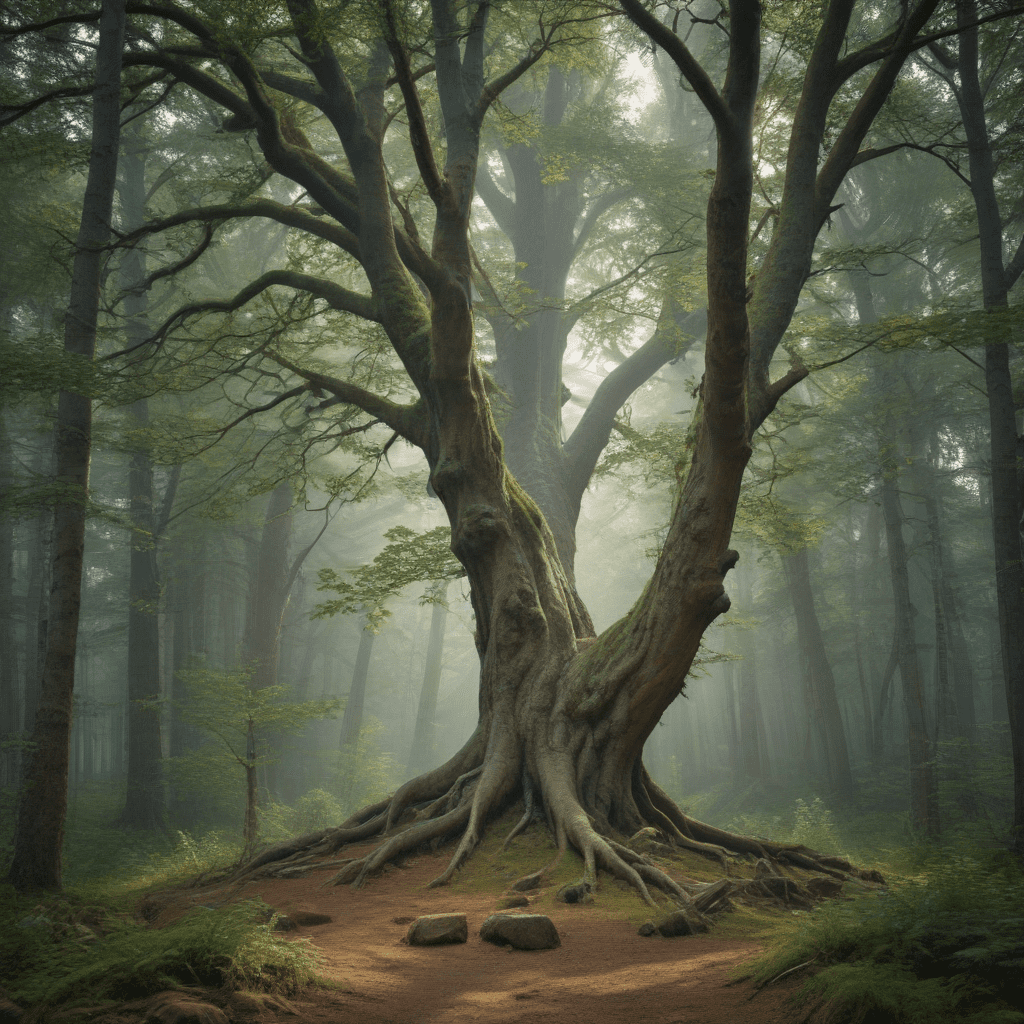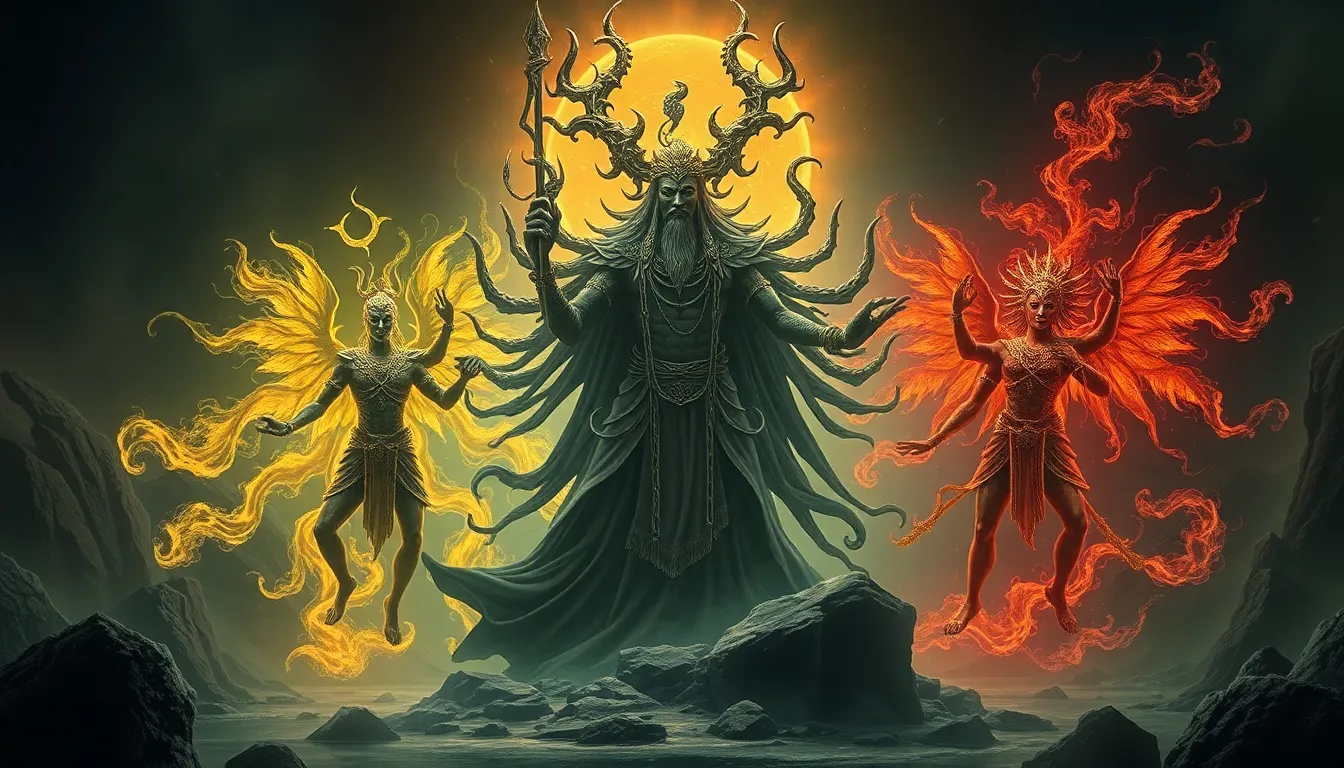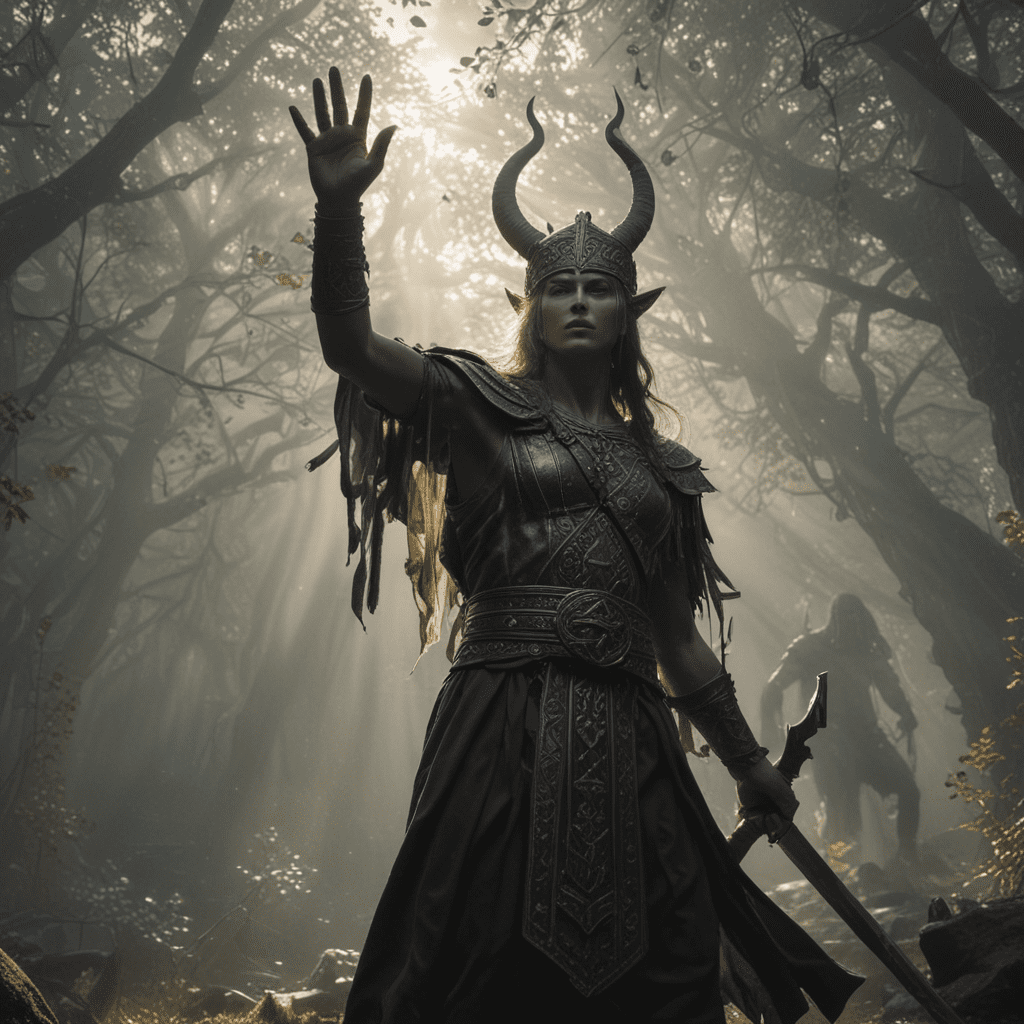The Symbolism of Trees in Finnish Mythology
Trees hold profound significance in Finnish mythology, deeply intertwined with the beliefs and traditions of the ancient Finnish people. They were not merely objects of the natural world but revered as sacred entities, embodying cosmic connections, divine presence, and the interconnectedness of all living things.
The World Tree: Yggdrasil and Its Cosmic Symbolism
Central to Finnish mythology is the concept of the World Tree, known as Yggdrasil. This colossal evergreen connects the nine realms of existence, stretching from the highest heavens to the deepest underworld. It is said to be an ash tree, its roots reaching into the realm of the dead, its trunk supporting the middle world, and its crown reaching into the heavens. Yggdrasil symbolizes the axis mundi, the center of the universe, and the interconnectedness of all things.
The Oak: Sacred Tree of the Thunder God Ukko
The oak tree is revered as the sacred abode of Ukko, the thunder god. It is believed that lightning bolts are arrows hurled by Ukko from his heavenly perch amidst the oak's branches. The rustling of oak leaves is said to be the voice of Ukko, and its acorns are considered sacred offerings. Oak trees were often planted near sacred groves and were believed to possess protective powers.
The Birch: Tree of Renewal and Healing
The birch tree is a symbol of renewal and healing in Finnish mythology. Its sap is said to have medicinal properties and is used in traditional healing practices. Birch branches are used to create whisks for purification rituals, and its leaves are believed to bring good luck and fertility. Birch trees are often planted near homes and are considered guardians of the threshold between the physical and spiritual worlds.
The Rowan: Protective Tree Against Evil
The rowan tree is revered for its protective powers against evil spirits and witchcraft. Its berries are said to ward off witches and its wood is used to make protective amulets. Rowan branches are often hung above doorways or windows to prevent evil from entering. The tree is also associated with knowledge and wisdom, and its berries are said to enhance memory and learning.
The Pine: Tree of Longevity and Wisdom
The pine tree is a symbol of longevity, resilience, and wisdom. Its evergreen nature represents the eternal cycle of life and death. Pine needles are believed to possess medicinal properties and are used in traditional healing remedies. The tree is also associated with the god Tapio, the guardian of the forest, and its wood is used in the construction of sacred objects.
6. The Juniper: Tree of Purification and Magic
The juniper tree is known for its purifying and magical properties in Finnish mythology. Its branches are used in purification rituals to drive away evil spirits and protect against curses. Juniper berries, with their strong aroma, are believed to have magical powers and are used in spells, potions, and amulets. The smoke from burning juniper wood is said to cleanse spaces and ward off negativity.
7. The Spruce: Tree of the Winter Solstice
The spruce tree is closely associated with the winter solstice in Finnish mythology. It is believed that on the shortest day of the year, the spirits of the ancestors descend through the spruce trees. Spruce branches were often used to decorate homes during the solstice celebrations, representing the connection between the physical and spiritual worlds. The evergreen foliage of the spruce is a symbol of resilience and the triumph of life over darkness during the bleak winter months.
8. The Willow: Tree of Water and Mourning
The willow tree is associated with water and mourning in Finnish mythology. It is believed that the souls of the departed reside near willow trees, and their branches are often planted near gravesites. Willow branches are also used in purification rituals and to bring comfort to the grieving. The weeping shape of the willow tree symbolizes sorrow and the flow of tears. It is a reminder of the interconnectedness of life and death in the cycle of existence.
9. Trees as Guardians of the Sacred: Forest Spirits and Ancestors
In Finnish mythology, trees are not merely objects of nature but are believed to be inhabited by spirits known as "haltijas." These spirits were often associated with specific tree species. For example, "Tapiola" was the forest spirit who watched over all pine forests. People would make offerings to the haltijas to ask for their protection or favor. Ancestors were also believed to reside in trees, watching over their living descendants and providing guidance in dreams or through the rustling of leaves.
Frequently Asked Questions (FAQs)
Q: What is the most significant tree in Finnish mythology?
A: The World Tree, Yggdrasil, is the most sacred tree in Finnish mythology, representing the axis mundi connecting all realms of existence.
Q: What tree is associated with the thunder god Ukko?
A: The oak tree is the sacred abode of Ukko, the thunder god, and its leaves are believed to carry his thunderbolts.
Q: Why was the birch tree considered important in Finnish mythology?
A: The birch tree symbolizes renewal and healing in Finnish mythology, with its sap used for its medicinal properties and its branches for purification rituals.
Q: What tree represents longevity and wisdom in Finnish mythology?
A: The pine tree is a symbol of longevity, endurance, and wisdom in Finnish mythology. It is associated with the god Tapio, protector of the forests.



